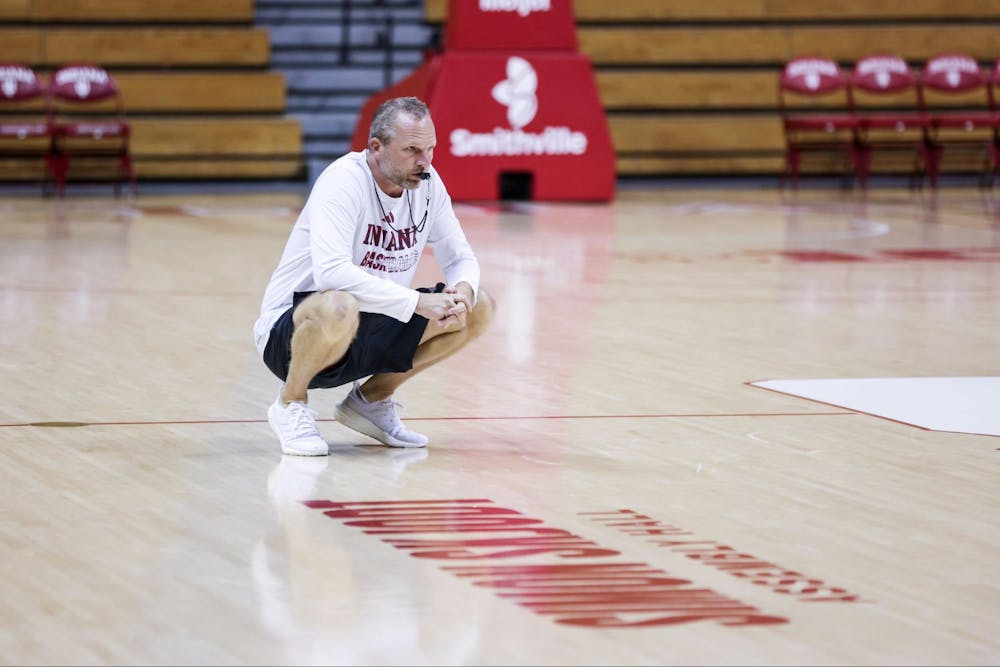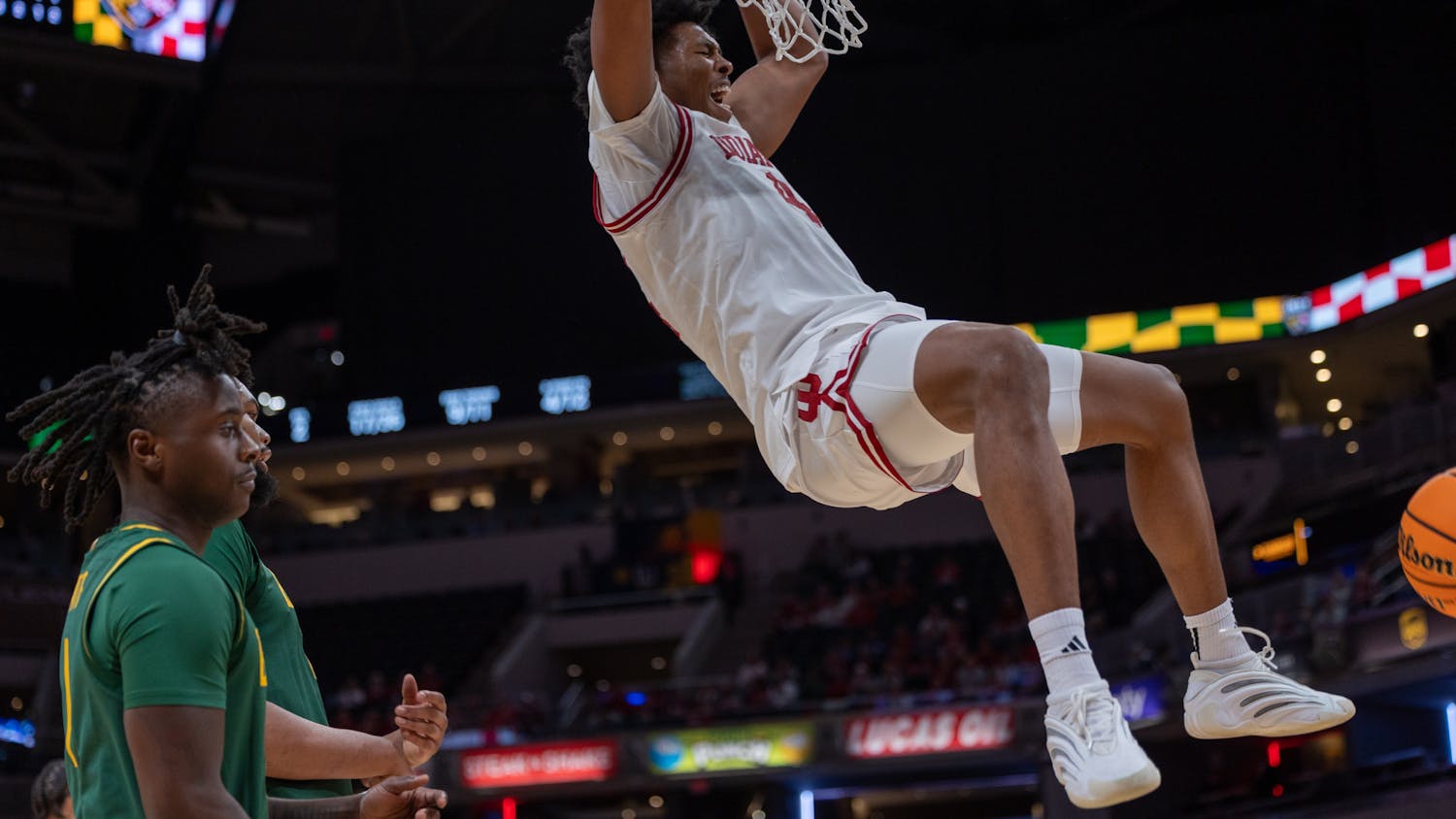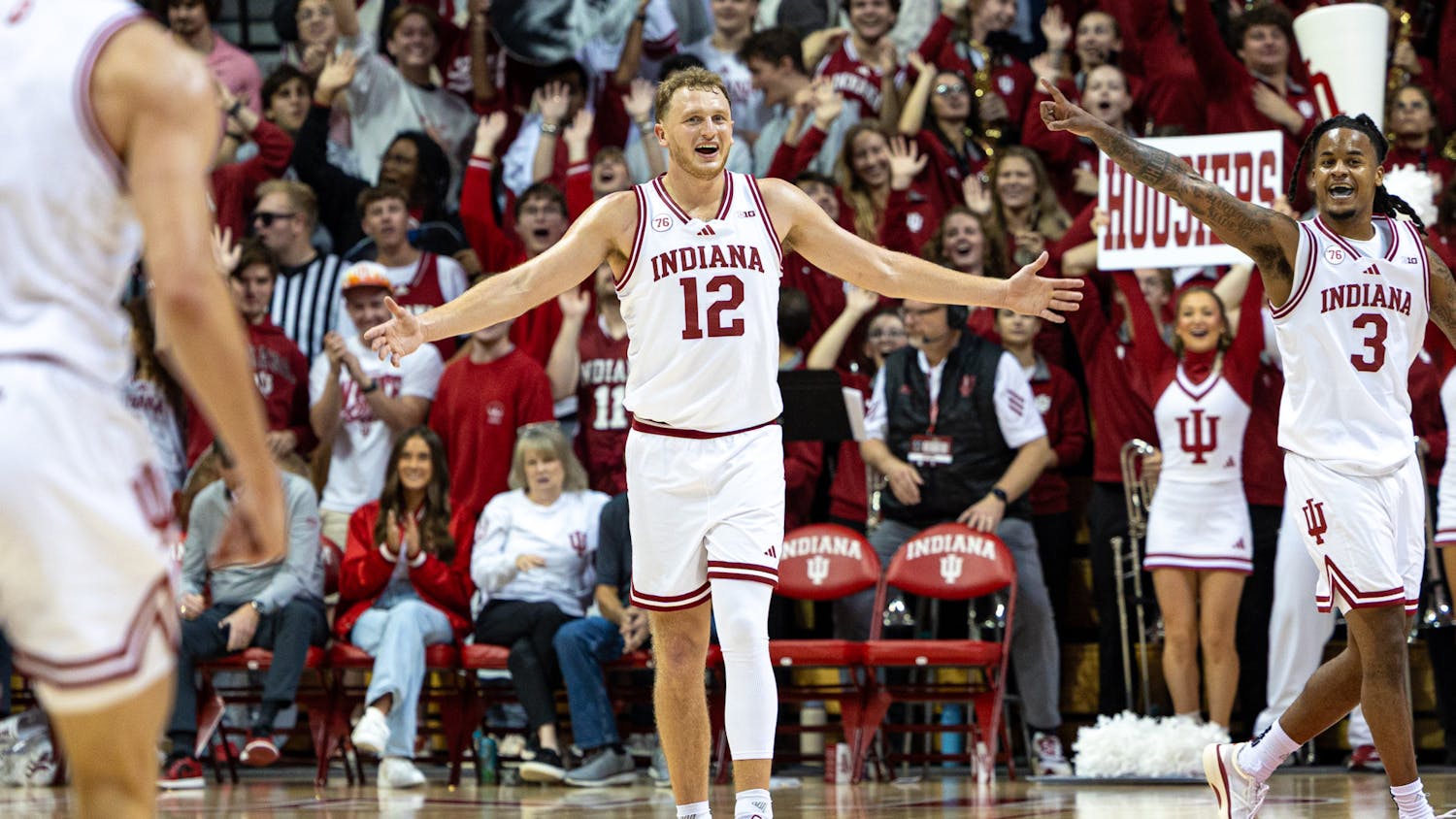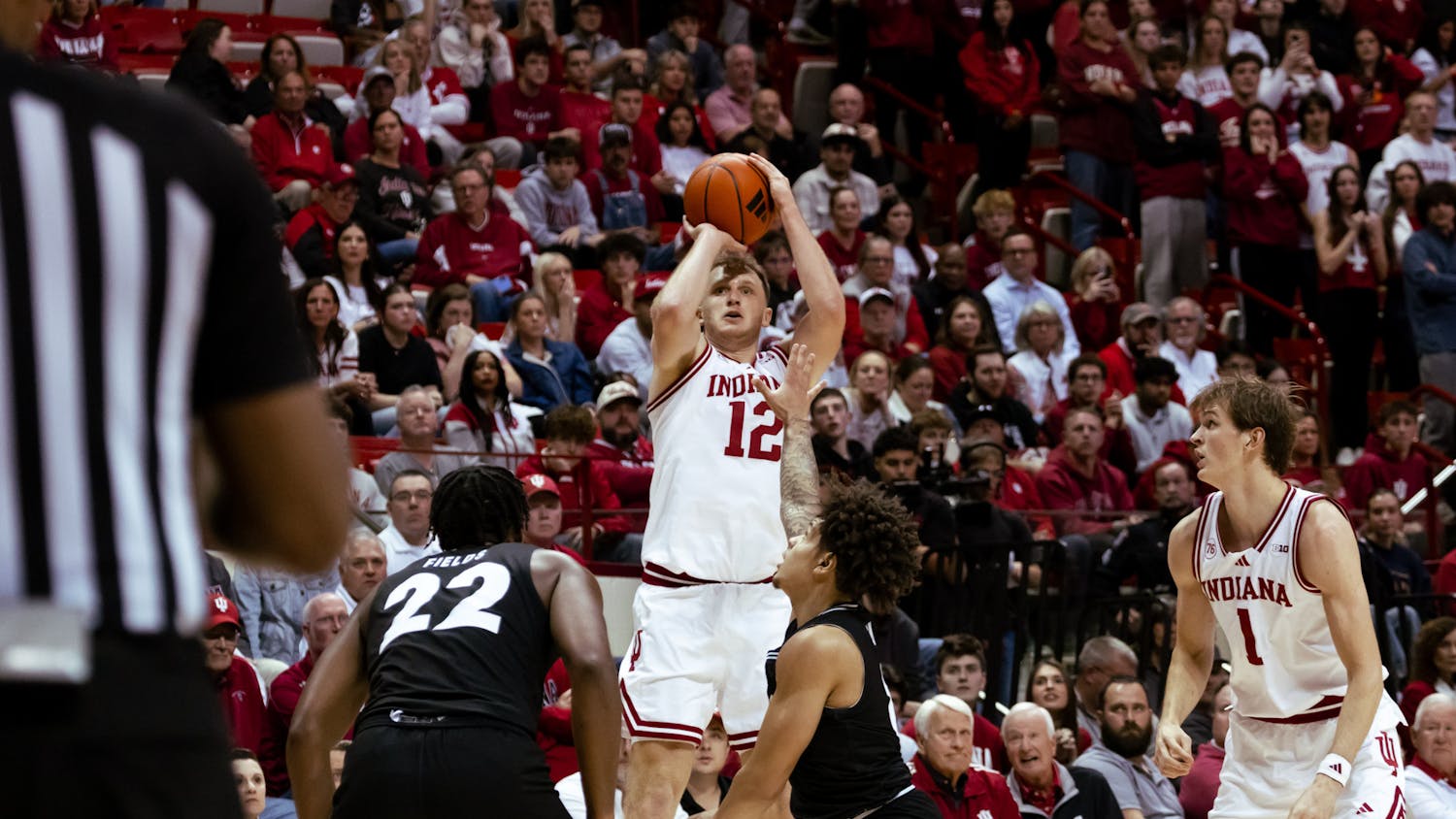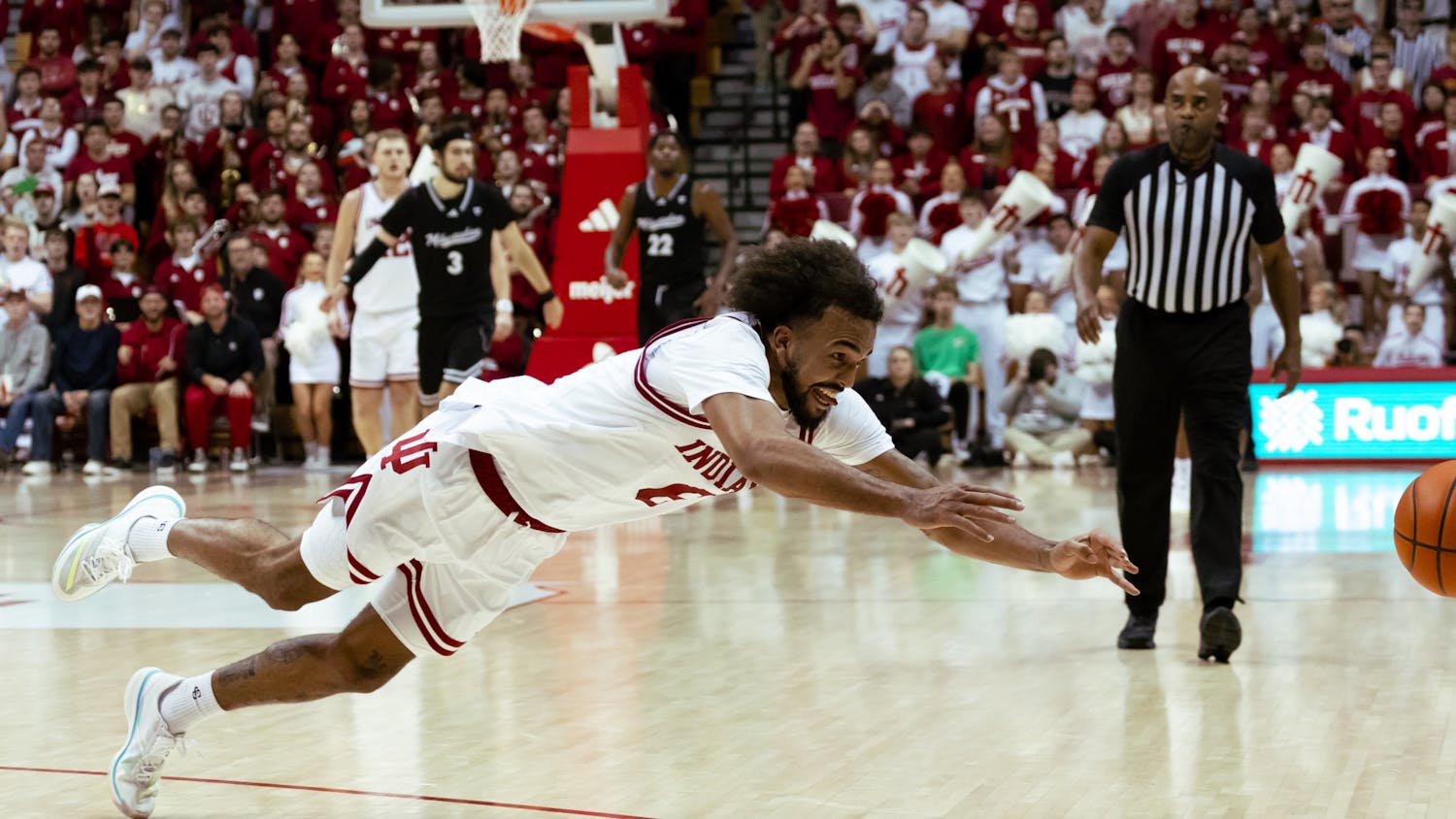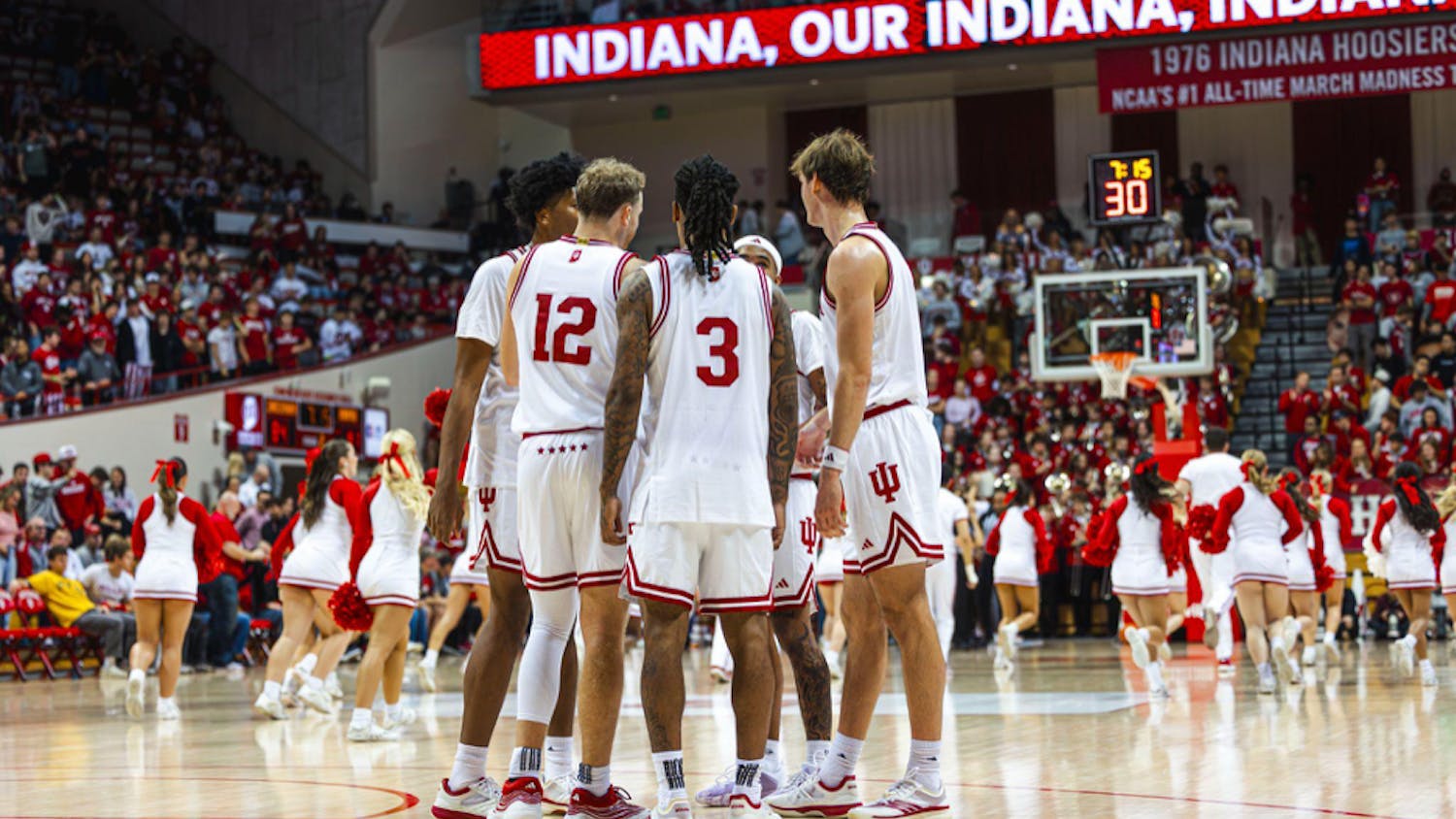For the second time this fall, we were able to get a glimpse inside first-year head coach Darian DeVries’s program in Simon Skjodt Assembly Hall, and the message was clear: this is no longer the same Indiana basketball program. With 13 newcomers, zero returning minutes and a first-year head coach, the Indiana Hoosiers are starting from scratch.
Still, what the roster lacks in continuity, it makes up for in urgency, scrappiness, and belief. The team is built on the foundation of success, while the roster hasn’t played a second of basketball in Simon Skojdt Assembly Hall. There are some promising signs for the new look Hoosiers.
Practice takeaways
The 90-minute session on Tuesday was broken into offensive walk-throughs, time, defensive drills and situational 515 action at both ends of the floor. DeVries and his coaching staff were heavily involved, demanding communication and accountability between everyone on the floor.
“If you don’t talk, you don’t play” has become a team mantra. DeVries’ emphasis on pace and spacing was clear — crisp ball movement, frequent 3-point attempts and paint touches defined each set on offense. On defense, the team rotated through shell drills and transition defense, where discipline and energy were non-negotiable.
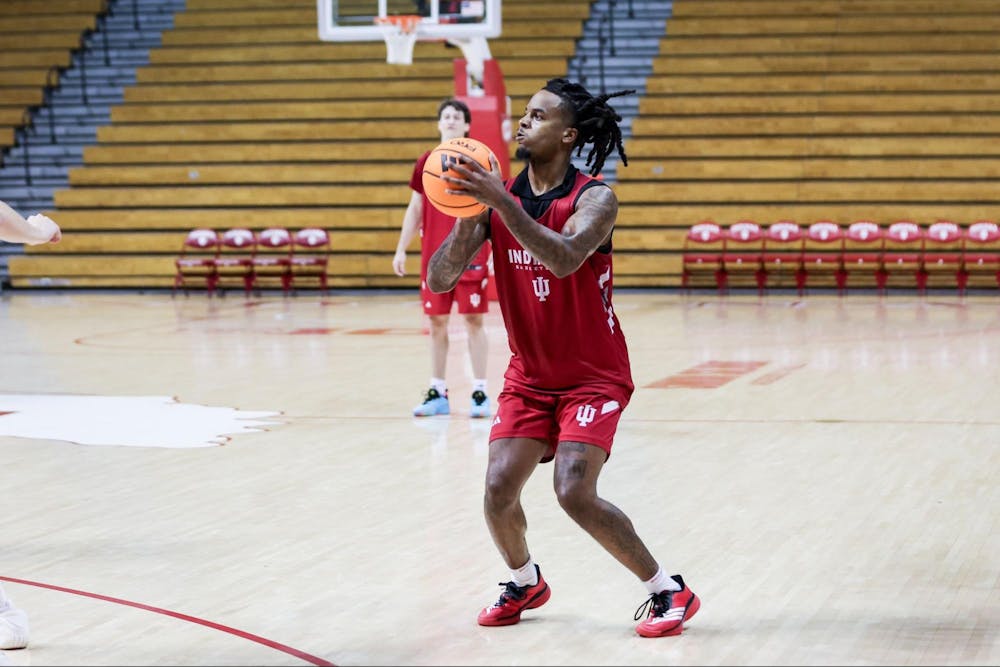
“What I love about this group is their coachability,” DeVries said. “They want to get better. They’re unselfish. They play with enthusiasm. That’s how we’re going to build this.”
What became apparent throughout the practice was that the new Hoosiers could shoot the ball lights-out. The Hoosiers struggled with their shooting last year, boasting a field goal percentage of 46.5% and a 3-point percentage of 31.4%. However, this year, at least through two practices and a pre-season tour, I can say I’ve seen a positive swing in the right direction for the Hoosiers.
“We’ve got the best shooters in the country,” senior guard Tayton Conerway said. “It makes practice hard, because if you don’t close out fast enough, that’s three points. Anybody on this team can get going whenever.”
Player observations
Lamar Wilkerson: Wilkerson is one of the most electric additions through the transport portal. Coming from Sam Houston State, Wilkerson averaged 20.5 points per game, shooting 47.7% from the field and 44.5% from beyond the 3-point line. The offensive firepower is a serious scoring punch. In scrimmage drills, he looked comfortable operating at all levels above the rim, mid-range and shooting off the catch. Wilkerson is going to be a central part of this Hoosier offense.
Tucker DeVries: In limited action at West Virginia, Tucker DeVries showed that he still has elite scoring DNA. DeVries averaged 14.9 points per game and played only eight games as a Mountaineer, shooting 41.2% from the field, and was an impressive 3-point shooter. But the story is how he will fit in Bloomington in his last year of eligibility. DeVries is more than just a scorer for this team.
Leadership, experience and court vision will help shape this team‘s identity. To Tucker DeVries, the NCAA Tournament is just the start.
“The obvious goal is the NCAA Tournament,” Tucker DeVries said. “That should be everybody’s goal coming into a year. But for us, it’s bigger than that. We want to build a culture here, set the groundwork for what Indiana basketball is going to look like moving forward. If we do that, the wins will follow.”
Tayton Conerway: Indiana fans should start to learn his name because opposing coaches will get tired of seeing this guy on defense. At Troy, Conerway was a problem offensively; he averaged 14.2 points per game, along with 4.6 assists and 4.8 rebounds per game. However, his defensive grit and intensity are what set him apart. The guard play that the Hoosiers have at their disposal is dangerously good on defense.
“Defense is something I take pride in,” Conerway said. “A lot of people don’t anymore, but I realized real quick — if you don’t defend, you don’t play.”
Conor Enright: At DePaul, Enright averaged 7.5 points per game, 6.2 assists per game and 3.3 rebounds, and shot 32.5% from 3. Enright is a scrappy guard who is a pass-first floor general. In practice, you witnessed the type of aggression and ferocity that Enright employs.
He is the type of scrappy guard every coach in college basketball would want on their roster. Enright is constantly talking, adding pressure on defense, and is always active in pursuit of loose balls and hustle plays.
“We can disrupt a lot defensively,” Enright said. “When one of us gets tired, the other comes in. It’s ball pressure all game.”
No team in the nation is going to want to go up against the backcourt of Conor Enright and Tayton Conerway.
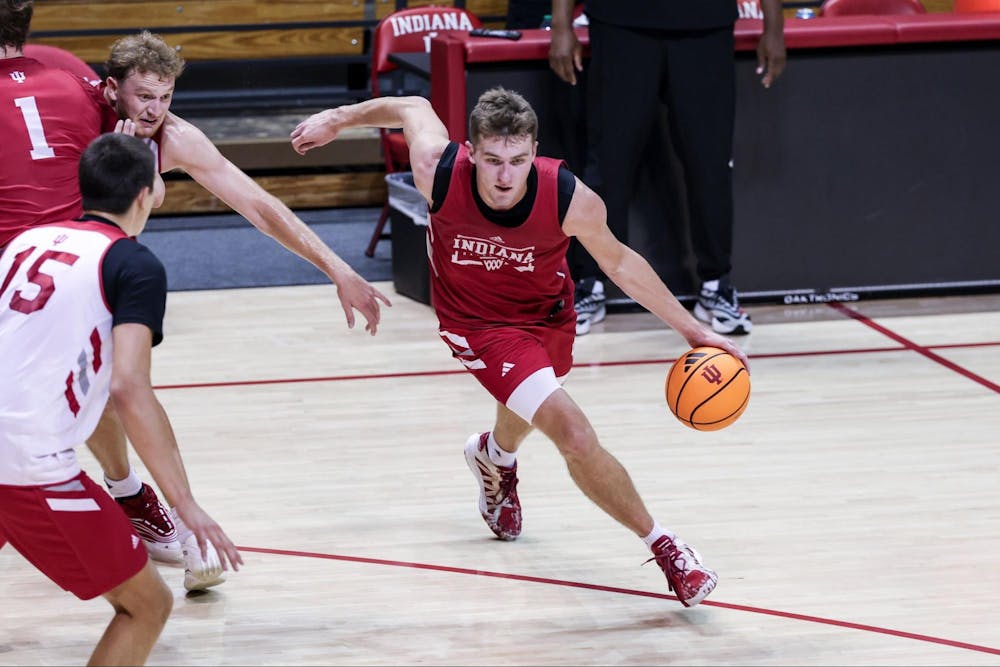
Trent Sisley: Sisley is a true freshman who doesn’t look like it. Sisley was all over the court playing with intensity, pushing the tempo of the game, fighting for rebounds and loose balls, and making shots. Sisley adds size and versatility to the Hoosiers team, which lacks a true center.
However, Sisley can play any position between the three and the five. I would expect to see Sisley in the starting lineup at some point in the season. Furthermore, in any role Sisley plays, I think he will cause a lot of havoc for opposing teams. He is capable of scoring 20 points on any given night, while also adding 10 rebounds and becoming a force defensively.
Reed Bailey: Bailey’s numbers from Davidson last year are jaw-dropping. The 6-foot-11 forward had 18.8 points per game, 6.1 rebounds per game and 3.8 assists per game, shooting 47.7% from the field and 41.5% from the 3-point line. He’s everything you would want from a stretch forward. He can create his own shot. He has the size to win match-ups down low, and he can shoot.
At practice, Bailey made his own role in the team. He can handle the ball, he can pass and he can dictate where his defenders go around the floor. If DeVries can use that to his advantage, he can space out the opposing defenses because nobody’s going to want Bailey alone beyond the 3-point line.
Sam Alexis: Alexis didn’t see much playing time at reigning national champion Florida. However, he brings in experience from being a member of a team that went on a historic run, winning the SEC and ultimately March Madness. In practice, Alexis looked to be a plug-in center for Darian DeVries. The gaps in the Hoosiers' roster lie in the front court. Alexis is going to have to step up when he comes off the bench to become a reliable backup big man in the Big Ten Conference.
Schedule preview
The DeVries era won’t ease in quietly. After exhibitions against Marian (Oct. 17) and Baylor (Oct. 26 in Indianapolis), the Hoosiers open the regular season with Alabama A&M (Nov. 5) before meeting Marquette (Nov. 9, Chicago, ESPN) in an early measuring stick.
Indiana then faces Kansas State (Nov. 25, Bloomington) and a December gauntlet that includes Louisville (Dec. 6, Indianapolis), a rivalry showdown at Kentucky (Dec. 13, ESPN), and Washington (Dec. 22).
The Big Ten schedule begins Dec. 3 at Minnesota, with heavyweight matchups against Purdue (Jan. 27 at home, Feb. 15 in West Lafayette), Michigan State (Jan. 10 and Mar. 1), and West Coast trips to UCLA (Jan. 31) and USC (Feb. 3).
It’s not an easy schedule for a first-year head coach and brand new team, but the Hoosiers are embracing it.
“I’ve never played in Assembly Hall with fans,” Tucker DeVries said. “That’s a bucket-list thing for me. The passion here is real, and we want to give them a team they’re proud of.”
A consistent theme throughout media day in Assembly Hall was a palpable sense of anticipation and excitement for the upcoming season. Darian DeVries isn’t promising instant titles or success, but he is promising toughness, accountability, and a style that fans can connect with.
“It’s not about wins and losses right now,” DeVries said. “It’s about whether we’re building the right habits every day. If we do that, the wins will follow.”
The biggest question right now, as we are a couple of weeks away from the start of the basketball season, is how this team will gel together. With shooters across the roster, an emerging defensive identity, and a coach who is unafraid to demand precision, Indiana enters the season as a mystery to the Big Ten but as a scrappy, dangerous and gritty dark horse.
